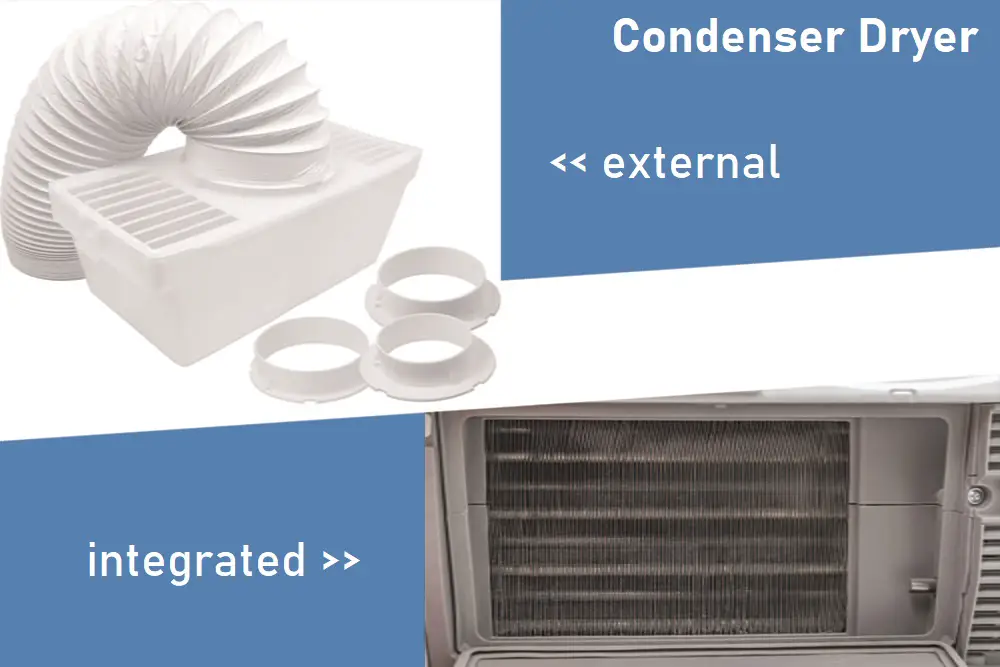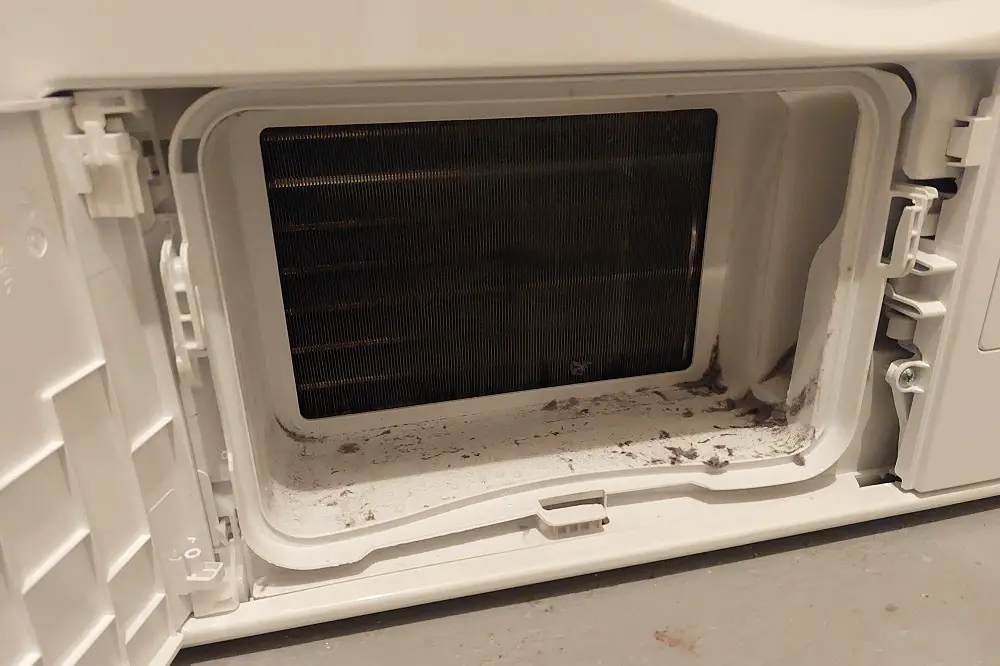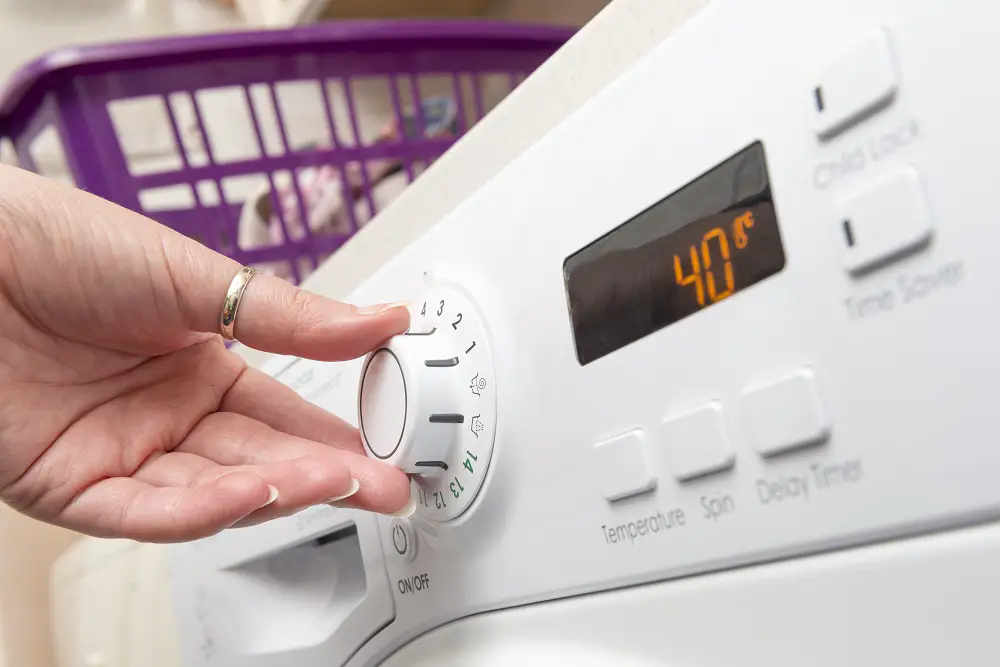This article explains all tumble dryer settings available, so you’ll know exactly what it is and how to use it.
Use our compelling table to find your requested setting:
A B C D E G H J M N P Q R S T W
Table of Contents
General Considerations
Using a tumble dryer is fast and easy but you should consider investing some minutes to check the manual for the appropriate cycles available and how to use them.
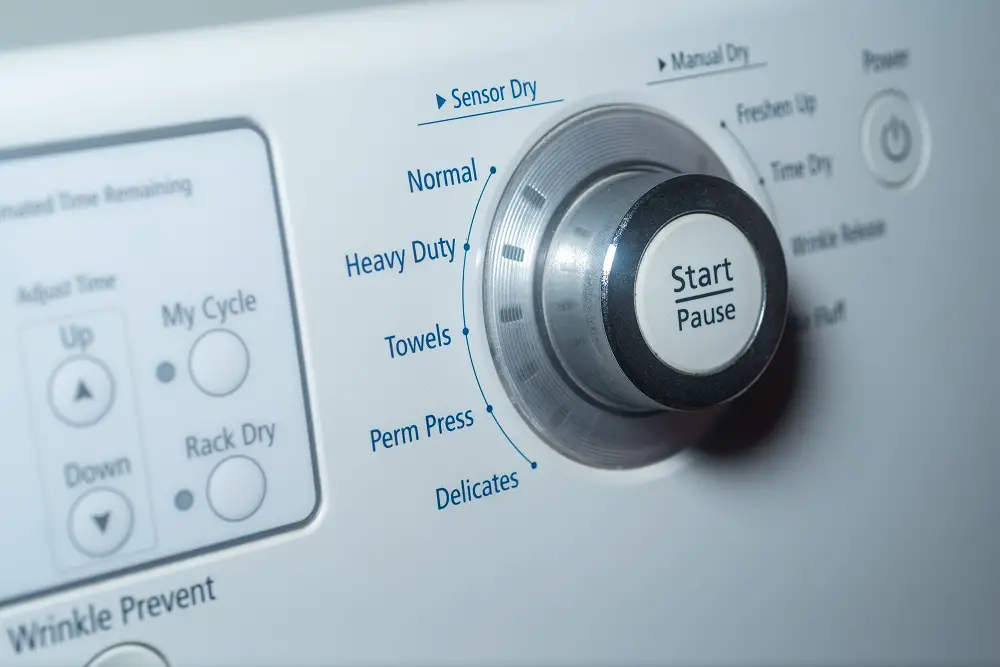
Each model has various options and it can get tricky to apply them correctly.
Mischosen programs will cost time, and money and can damage your laundry.
- Read the manual (especially the programs section)
- Check the care labels
- Group your laundry
- Check the expected loading per setting (it is rarely the maximum)
- Avoid manual programs
- Use the shortest and coolest program that applies
- Get the laundry out when finished
- Do proper maintenance
Useful tip: Each manual contains a table with the programs. Make a copy, put it in a clear sleeve, and tag it onto your dryer. This will help you for years!
Tumble Dryer Settings Explained
Tumble dryers have plenty of options regarding heat settings, cycles, and timings. An efficient way of doing laundry is to check the garment’s care label for any specific tumble dry symbol to select the setting accordingly.
Here’s what each tumble-dry setting means.
Anti Crease, Anti Wrinkle, Wrinkle Guard, Wrinkle Protect, Wrinkle Shield
Temperature: No heating
Cycle Length: Infinite
Laundry: All
The anti-crease setting is designed to stop clothes creasing. It prevents items that have already dried in the tumble dryer from getting creased up.
The dryer will intermittently tumble the clothes in unheated air at the end of the cycle to reduce wrinkles. Periodic drum rotations can prevent wrinkles on the dried laundry.
It’s particularly helpful for those who forget to take their clothes out of the dryer.
Air Dry, Air Fluff, No Heat
Temperature: No heating
Cycle Length: from 120 minutes
Laundry: Do-Not-Tumble-Dry Clothes
Air dry or Air fluff in tumble drying uses no heat and simply tosses your clothes using room temperature air. An alternative to air drying, the laundry is tumble dried in the dryer drum by circulating the air and fluffing clothes.
This setting is best for drying items containing rubber, plastic, or other heat-sensitive fabrics (like rubber-backed bath mats and rugs). It also helps remove dust, lint, and pet hair from fabrics and fluff up pillows or down-filled items like comforters and coats.
Since no heat is used in this cycle, it will take longer and not completely dry wet clothes. It’s apt for dry-clean-only fabrics or those that have been stored and smell musty.
Useful tips:
- Add a few wool dryer balls for better results in fluffing.
- Add a dryer sheet or a damp cloth scented with essential oil for a fresh, clean smell for dry-clean-only fabrics.
Automatic Dry, Sensor Dry
Temperature: Program heat
Cycle Length: Variable (30′ to full cycle)
Laundry: All
This is an energy-efficient option since it causes your dryer to shut off automatically when clothes are detected as dry.
Modern models do have a sensor integrated and use it with every program to detect the remaining humidity.
Nevertheless, some older appliances do have this as a separate program. This automatic dry setting is best for
- Athletic wear
- Baby clothes
- Bedsheets and comforters
- Cotton and linen clothes
- Jeans
- Towels
Usually, this uses the highest heat setting but doesn’t dry clothes any longer than needed.
Useful tip: Clean the moisture sensor once a month by rubbing it with a cotton swab dipped in rubbing alcohol to maintain the efficiency of this cycle.
Baby Cycle
Temperature: Low to Medium
Avg. Cycle Length: 90 minutes
Laundry: Baby clothes
Baby clothes are tiny and dry faster than most other garments. Exposing them to high heat for more extended periods can cause damage.
The cycle length varies but is usually much shorter than normal programs since the advised loading is reduced (for example 3kg in an 8kg machine).
If your front-load electric dryer has a baby cycle setting, you can use it to dry delicate baby clothes. However, avoid using this cycle to dry items that have plastic (like bibs). Most items are dry and ready to wear once the cycle is done.
Some heavy items might still be slightly wet at the end of the cycle; turn them inside out and use the same setting to dry them again.
Useful tip: Use a permanent press or delicate setting to wash baby clothes if your dryer doesn’t have the baby cycle.
Bedding, Bed Linen
Temperature: Medium to High
Cycle Length: 200 minutes
Laundry: Single- and multilayered cotton
The Bedding cycle (found in very few tumble dryers, like Samsung dryers) is intended for bulky items like blankets, pillows, duvets, comforters, and sheets.
Sometimes, the material might be too delicate for your washing machine, let alone a dryer. Consider getting your comforter or duvet dry-cleaned if that’s the case, even if your dryer has a Bedding cycle.
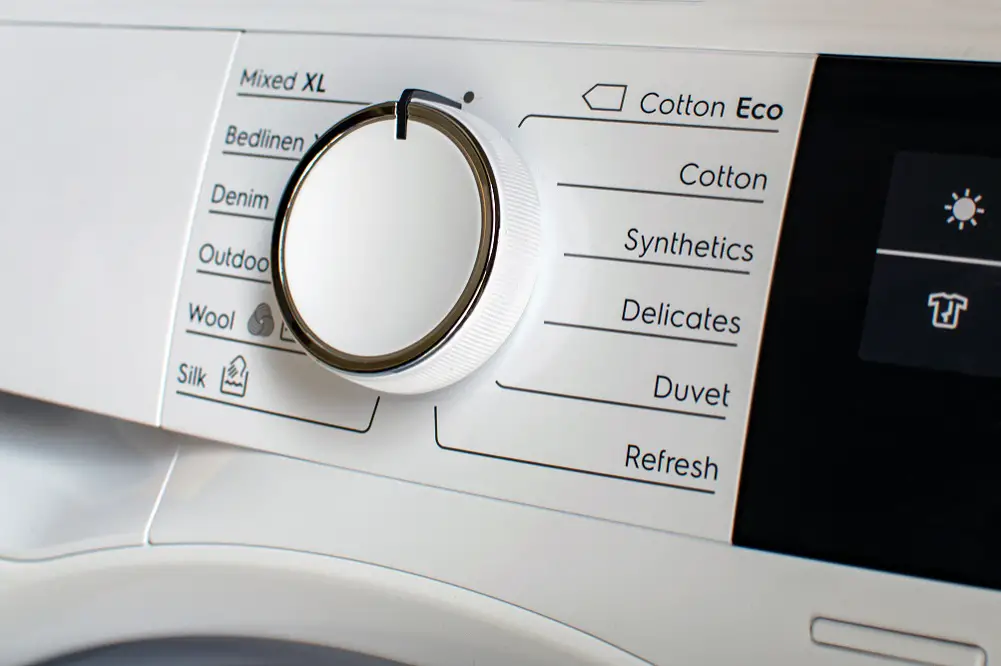
Cupboard Dry, Cup
Temperature: Medium to High
Cycle Length: 200
Laundry: Normal and thick clothes
Also known as ‘Ready to wear,’ the Cupboard dry option allows you to put your clothes away immediately once the cycle is complete.
Different manufacturers might have different definitions of what Cupboard dry means. Generally, you can take your clothes out of the dryer and store them or wear them right away.
Check the model specifications to see what heat setting the cycle uses to dry clothes. It’s best to avoid using it for delicate materials that could get damaged or wrinkled when exposed to high heat.
Damp Dry
Temperature: Medium
Cycle Length: 140 minutes
Laundry: Cotton and non-delicates
Some clothes have labels that suggest the items be removed from the dryer while still damp to avoid excessive wrinkling or shrinkage. The dryer’s Damp dry or Iron dry option can be used for such laundry items.
Depending on the dryer model, the Damp dry setting may either
- stop the drying cycle when your clothes are slightly damp to the touch, or
- the dryer sounds an alarm at this point and continues with the drying cycle.
Consult your dryer’s user manual to know how it works for this setting.
Once you load your laundry into the dryer and select a cycle, press the button for the Damp dry signal before you press Start. Your dryer will sound an alarm when the clothes are about 80% dry.
Useful tip: When the Damp dry cycle is done, or the dryer sounds the alarm, remove the damp clothes from the dryer immediately to avoid mildew or musty odors, and iron dry or hang dry.
Denim, Jeans
Temperature: Medium
Cycle Length: 150 minutes
Laundry: Denim
The Jeans or Denim cycle removes moisture from jeans and other denim by changing the temperature automatically during the cycle.
Jeans must be dried inside out on a low heat setting. This option prevents your jeans from shrinking, fading, or becoming damaged.
Useful tip: Throw in some dryer balls to help agitate the jeans, help circulate warm air inside better, and limit wrinkles.
Duvet
Temperature: Low to Medium
Cycle Length: 220 minutes
Laundry: Duvets
Similar to the Bedding program, this is specifically meant for duvets.
If your dryer doesn’t have a Duvet program, use a low-heat setting to partially tumble dry your duvet for the first half of the cycle, then finish drying outside by laying it flat.
Easy Care
Temperature: Low
Cycle Length: 70 minutes
Laundry: Silk garments
The Easy-care dryer program is appropriate for:
- Synthetics
- Silk
- Satin
Ideally, you must only load half the amount of clothes you would put in a cotton load since the drying capacity for this program is lower than the machine’s overall capacity.
The reduced drum revolutions make it ideal for silk, satin, synthetics (like clothes made of polyester), and even curtains or sportswear.
Easy Iron
Temperature: Program Heat
Cycle Length: Program Length
Laundry: All
The Easy iron setting cools down clothes that are already tumble-dried.
It involves a few minutes of heat followed by a short cool-off period allowing the clothing’s fibers to relax and making it easier to iron.
It can be combined with cotton (145 minutes), synthetics (70 minutes), or other programs, depending on your tumble dryer.
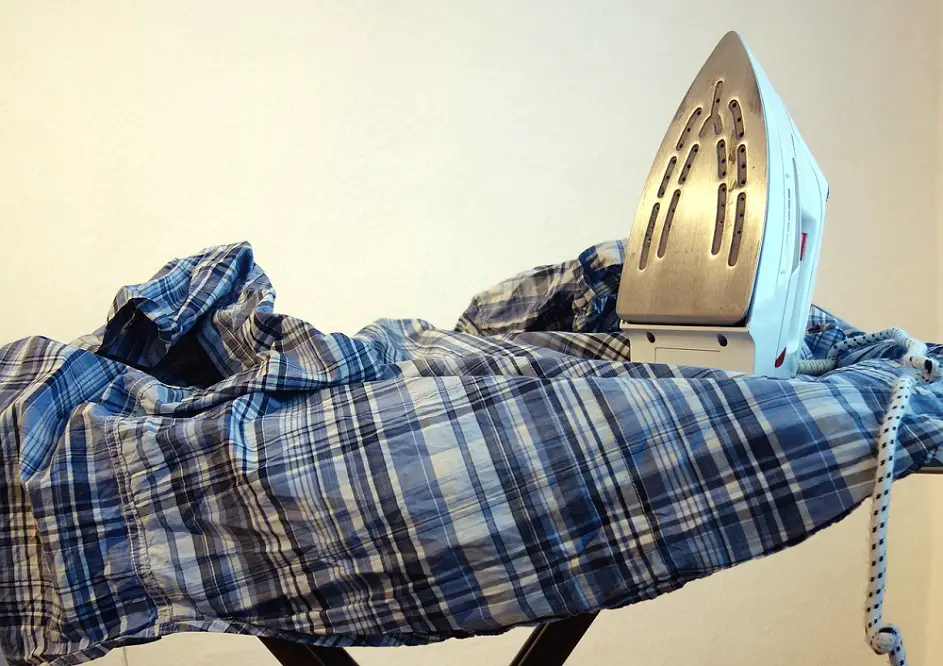
Eco, Energy Saver
Temperature: Low to Medium
Cycle Length: 200 minutes
Laundry: All
This economy program (also called the Energy Saver program) helps save energy while achieving the same drying results by dynamically adjusting the temperature and time during the cycle.
It reduces the energy consumption in the Cotton/Normal cycle based on the load size.
The cycle starts with air drying, and the drying time is increased.
However, the energy saved varies as the cycle lengths are extended. It depends on the load size and temperature setting. This option is turned on by default in the Cotton/Normal cycle.
Express Dry, Quick Dry
Temperature: Medium to High
Cycle Length: 40 minutes
Laundry: Cotton and Non-delicates
The Express dry, Speed dry, or Quick dry features, found in many dryers, are short, quick programs that take 30-45 minutes to complete the drying process.
It does depend on the load and how wet the laundry is. Such a program uses a higher temperature and compression power to dry clothes quickly.
It is usually combined with a smaller load to increase the drying speed.
Useful tip: Throw in a clean, dry towel with the laundry in the dryer drum to help soak excess water and cut down drying time.
Extra Dry
Temperature: Medium to High
Cycle Length: Normal Length + 15 minutes
Laundry: Non-delicates
The Extra Dry setting is a more extended program that uses a medium to high heat.
It’s suitable for:
- Multi-layered thick fabrics
- Bedsheets
- Blankets
- Towels
- Duvet covers
- Heavy cotton items
The longer cycle time ensures bulkier items are completely dry.
Gentle Care, Delicate
Temperature: Low
Cycle Length: 70 minutes
Laundry: Delicates
Also known as the Delicate cycle, this is suitable for your most delicate fabrics. It’s the equivalent of a tumble dry low heat setting.
This cycle will take longer to dry clothes with low heat. It is ideal for
- Nylon
- Wool (like sweaters)
- Spandex and workout wear (even with iron-on decals)
- Rayon
- Silk
- Chiffon
- Lingerie and undergarments
- Items with embellishments like beads or sequins
- Embroidered items
- Loosely woven fabrics
Most of these garments are prone to stretching, fading, or fraying under high heat and are best air-dried by hanging or laying flat to dry.
While this drying process with low heat helps keep your clothes safe, it’s best to avoid using it regularly and air-dry instead.
Useful tip: Only put half a load of delicate laundry in to dry at a time.
Heavy Duty
Temperature: Medium to High
Cycle Length: 200 minutes
Laundry: Heavy Items
Tumble dry high is also known as Heavy duty or Sanitize cycles and is suitable for large, bulky items:
- Comforters
- Bathrobes
- Sweatshirts and sweatpants
- Beach towels
- Jeans
- Corduroys
It is similar to the Extra dry program and uses higher temperatures and longer cycles to get your laundry dry and fluffy.
Useful tip: Check the garment care tags before drying items on high heat with this cycle.
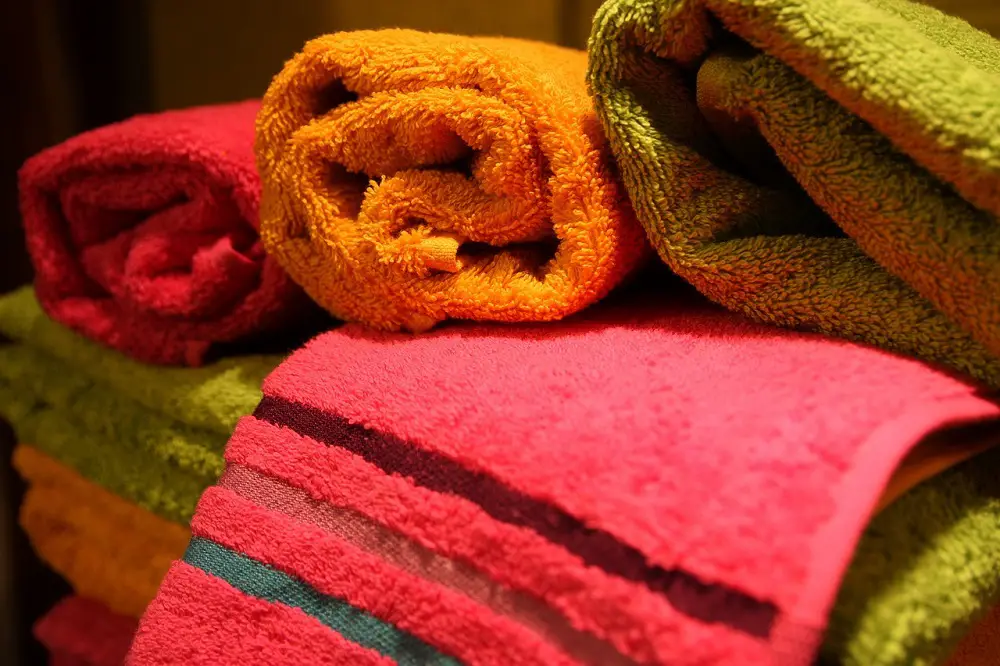
High Heat
Temperature: High
Avg. Cycle Length: 170 minutes
Laundry: Non-shrinkage
The High heat cycles are suitable for cotton and garments that take longer to dry, like:
- Towels
- Jeans
- Sweatshirts
However, some fabrics can shrink in high heat settings; check the care label to determine the appropriate dryer temperatures. The garment is suitable for a high-heat program if the care label has a circle with two dots.
This setting isn’t suitable for delicate fabrics like silk and synthetics.
Mixed, Mixed Load
Temperature: Medium
Cycle Length: 120 minutes
Laundry: All
When you want to dry various fabrics at the same time, cotton or synthetics, the Mixed load setting helps.
Avoid mixing two extremes of fabrics like cotton or heavy items with delicate items like silk or wool, or even mixing colors like a white shirt with a bright red jumper. Easy care items like denim, linen, and cotton.
A mixed load is a good choice to save time and energy when doing laundry.
Normal, Regular
Temperature: Medium
Cycle Length: 180 minutes
Laundry: Non-delicates, Non-heavy
The most commonly used tumble dryer cycle is the Normal or Regular cycle, suitable for
- Cotton
- Linen
The cycle automatically stops when optimal dryness levels are reached.
Permanent Press
Temperature: Medium
Cycle Length: 110 minutes
Laundry: Daily non-delicates
Equivalent to tumble-dry medium, the permanent press cycle uses medium heat. It is ideal for
- Wrinkle-resistant clothing
- Everyday garments like pants, shirts, blouses, dresses, jackets, and slacks
- Synthetic fabrics (like polyester)
- Workout wear
The medium heat setting will dry fabrics slower and gentler than high heat. It also prevents wrinkles (helps you avoid steaming or ironing your clothes) and protects synthetic materials that can ripple under high heat.
The permanent press setting may be labeled as wrinkle control or wrinkle-resistant on some dryers. The clothes dryer stops generating heat in the last several minutes of this cycle and pulls room-temperature air for the cool-down period, helping relax any lingering wrinkles.
Useful tips:
- Add dryer sheets or dryer balls when using this drying cycle to prevent wrinkles and static (in synthetic fibers).
- Promptly remove the clothes and hang or fold them to reduce the need to iron them.
Refresh
Temperature: Low
Cycle Length: 15 minutes
Laundry: All
If you’d like to smooth out wrinkles and reduce odors from loads of already dry items, consider using the Refresh cycle. It’s particularly useful to warm up or agitate clothes you forgot to remove from the dryer or to remove any odors.
Sanitize
Temperature: High
Cycle Length: 120 minutes
Laundry: Robust clothes
The Sanitize cycle of your dryer uses extreme heat to eliminate more than 99% of common household bacteria, microorganisms, and germs from your laundry.
This cycle is suitable for:
- Bedding
- Curtains
- Reusable cloth diapers
It lasts longer than the normal dryer program and isn’t recommended for normal laundry due to the extreme heat.
Shirts
Temperature: Low to Medium
Avg. Cycle Length: 60 minutes
Laundry: Shirts
This program is specifically meant to tumble-dry your shirts in a low-heat setting suitable for the material.
Always check the care label of your shirt before using this program; not all shirts can be tumble dried.
Silk
Temperature: Very Low
Cycle Length: 70 minutes
Laundry: Silk
While it isn’t recommended to dry silk items in a tumble dryer, if you absolutely must, select the Silk option. It uses an extremely low temperature to dry silk clothing.
Useful tip: If your dryer doesn’t have the Silk option, use the Delicate or Gentle cycle for silk garments.
Sports, Sportswear
Temperature: Medium
Cycle Length: 130 minutes
Laundry: Sportswear
The Sports, Sportswear or Activewear cycle is for water-repellant wear, like outdoor wear, exercise wear, water-repellant jackets, training pants, sports jerseys, and other performance clothing.
Often, thick fabrics like training socks or items with a velcro or zipper closure may not dry completely.
Since the stretchy material of sportswear doesn’t react well to intense temperatures, this setting doesn’t expose these items to too much heat. It takes longer to dry, though.
Steam Refresh
Temperature: Low
Cycle Length: 10 minutes
Laundry: Wrinkled clothes
In newer dryers, the steam refresh or steam cycle creates or pumps steam into the dryer drum to help remove wrinkles. It is suitable for:
- Wrinkled clothing
- Items that smell musty from being in storage and could use refreshing
This dryer cycle doesn’t dry clothes but uses water and heat to refresh fabrics without rewashing. Usually, a few minutes long, it removes odors and gently releases wrinkles.
It’s also handy when you forget to take your clothes out of the dryer for too long. A quick spin with the steam refresh or steam cycle will help remove wrinkles, making them ready to keep in your drawer or closet.
Synthetics
Temperature: Medium
Cycle Length: 75 minutes
Laundry: Synthetics
The Synthetics setting is suitable for synthetic-based clothing items, like the ones made of polyester. It uses gentle heat and minimal tumbling to prevent harm to the fibers of the delicate material.
This is similar to the Easy care cycle.
Synthetics Easy Iron
Temperature: Medium
Cycle Length: 65 minutes
Laundry: Synthetics
This program dries the laundry just like the Synthetics cycle, and before the cycle ends, there is a cool-down period to ensure the clothes are ready to be ironed as soon as they’re out of the dryer.
Timed Dry
Temperature: Depends on settings
Cycle Length: As chosen
Laundry: Non-program clothes
The Timed dry cycle is one of the manual dry cycles and runs for a customizable amount of time. You can set how long you want your clothes dried by pressing a button or turning a dial on the machine.
This is suitable for damp loads, like jeans, that need slightly more drying time.
However, sometimes it results in wrinkling, shrinkage, or static because of over-drying. Often, you can choose between 15-90 minutes of drying time for a Timed dry cycle.
Towels
Temperature: Medium to High
Cycle Length: 200 minutes
Laundry: Heavy items
As evident from the name, this cycle is used to dry loads of bath towels, beach towels, or bathrobes.
Useful tip: If your dryer doesn’t have a Towels option, use the Extra dry, Tumble dry high, Heavy Duty, Regular, or Sanitize cycle instead.

Wool
Temperature: Low
Cycle Length: 75 minutes
Laundry: Wool
The Wool program is intended for woolen fabrics suitable for tumble drying. Wool shrinks when exposed to high temperatures, so the materials will only become fluffier with this cycle, not dry.
It’s similar to the Delicate/Gentle cycle and uses minimal tumbling and gentle heat. Dryers with this cycle option are equipped with an inverter motor. The drum rotates slowly to keep the shape of clothes and stops tumbling every few minutes.
Recommendations for Using Tumble Dryer Settings Correctly
Here are some ways to ensure you use the proper tumble dryer settings for the loads you’ll be drying:
- Check the garment care labels for the different laundry symbols to know how best to dry them
- Refer to the user manual of your machine
- Do an online search to find which setting is suitable
- Take the program table of your dryer, put it in a clear sleeve, and attach it to your dryer or next to it
Conclusion
With the vast number of options, tumble dryers have these days for temperature settings and programs, it can get confusing on which setting is suitable for your load.
Always check the garment’s care label and select suitable settings to dry your laundry efficiently.
